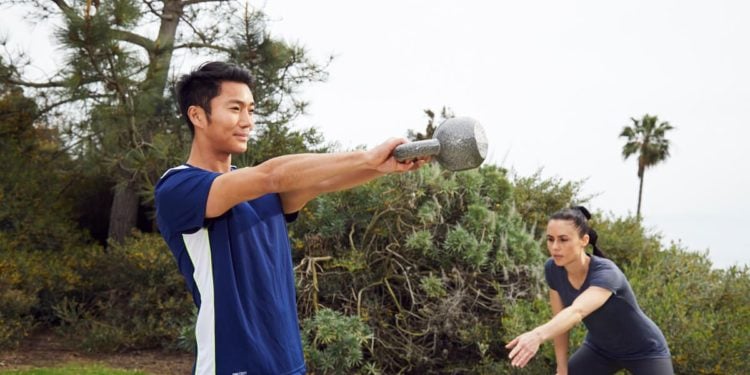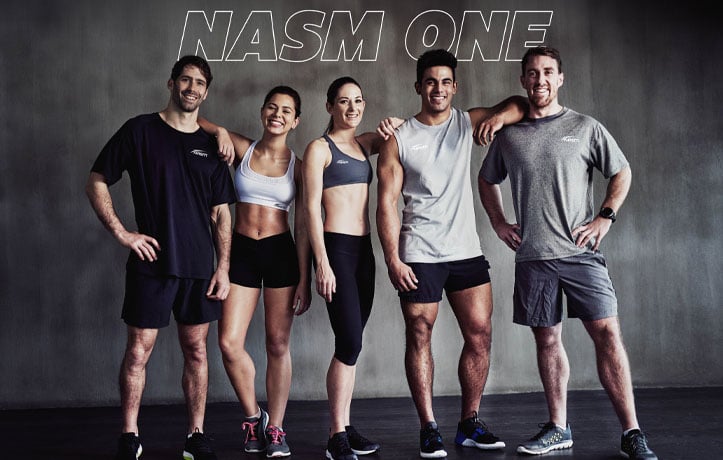Most personal trainers are passionate about fitness and living a healthy lifestyle. They believe in exercise, eating right, and learning all about new exercises, nutrition requirements, and gym equipment. They believe in this lifestyle so much they’ve decided to make it a profession.
Yet, there is more to personal training than understanding diet and exercise. Personal training also requires skills in sales, marketing, finance, and customer service.
Whether you plan to work independently, as an online personal trainer, or at a local health club, successfully running your personal training business is no different than starting any other business— it takes time, determination, preparation, and a well-thought-out and detailed plan.
See our fitness careers page to get a glimpse of all the great fitness careers you can explore. And if you want to learn how exactly to become a personal trainer, see the how to become a CPT page.
STARTING OUT
The first step to becoming a fitness professional is education! Earning a certification from an accredited organization should be an aspiring personal trainer’s first goal. Education is vital for teaching aspiring fitness professionals on how to properly assess and instruct their clients through safe and effective workouts.
The International Health, Racquet & Sportsclub Association (IHRSA.org) recommends earning a certification from an organization that has either earned accreditation or is in the process of receiving accreditation of their programs (i.e., National Commission for Certifying Agencies)In addition to earning a certification, higher education such as completing an associate, bachelors, or even a master’s degree further, enhances your marketability, experience, and knowledge regarding health and fitness.
Currently, there are no government regulations requiring fitness professionals to earn a certification or college degree. However, most gyms and health clubs will not hire someone who has not earned (or is in process of earning) a personal trainer certification.
In fact, more and more gyms are taking IHRSA’s advice and requiring fitness professionals to earn an accredited certification. Unaccredited certifications are becoming a thing of the past, and the fitness community is demanding more education from today’s fitness professionals.
WHERE TO WORK?
Finding your dream job takes work and determination. Keep in mind the old cliché, “poor preparation equals poor performance.” Therefore, before hitting the streets, let’s map out all the steps.
Take some time to consider where you would like to work and the advantages and disadvantages of each place.
10 THINGS TO CONSIDER:
- Do you prefer to be your own boss or work for someone else?
- How many hours in a week are you willing to work?
- How will your new career affect your family and loved ones?
- What are your financial goals?
- Do you need insurance/health benefits?
- What do you want to be doing 5 -10 years from now?
- What type of clients do you like to work with (youth, elderly, athletes, etc.)?
- Are you willing to relocate?
- Is travel or a long commute involved?
- Do you need additional certifications, schooling, or training?
LOOKING FOR A JOB
The first step is to determine the type of work environment that fits your needs and career aspirations. This could be a commerical gym or even just the comfort of your home.
Narrow your focus. This will drastically help your search process and save you much needed time and effort. The old cliché “I know it when I see it” doesn’t apply for a career search. You need to be specific about what you need and want in your fitness career.
There are several resources available to help search for a job, but arguably the three most important are the internet, your local university, and referrals.
ONLINE
The internet can be a valuable resource and is available for almost anyone. Even if you don’t own a computer or a smartphone, you can visit your local public library to start your job search. Using popular job search engines can help you find a plethora of job postings in your area. Some of these websites require a membership, but they allow your resume to be seen by countless employers.
UNIVERSITY
If you’re currently in college or an alumnus, a great resource is your college’s career center. Generally, career counselors will give you tips on job searches, resume writing, and interviewing skills. Who knows, your local college may even have an opening— such as in their recreational or athletic departments.
REFERRALS
Referrals are a great way to get a job, especially in a saturated market. For example, your local gym may not be outwardly advertising for a new personal trainer position, but because you are friends with one of the trainers, you may get hired anyways. Referrals help give you instant credibility.
HOW TO APPLY?
There are many important factors to consider when applying for a job. Employers want to hire well-educated, enthusiastic, and articulate fitness professionals.
STEP 1: RESUME
It is extremely important to put together a resume. Your resume should be a one-to-two-page synopsis of your skills, education, and work history. It is important to tailor your resume to the particular job you’re applying for and be as specific as possible. List your best qualities at the beginning of your resume. (Here’s more on resume writing.)
STEP 2: RESEARCH
Visit potential gyms in your area. Try to imagine what it would be like working there. Talk to the personal trainers, front desk staff, and managers to learn more about that specific facility, its culture, and staff.
STEP 3: INTERVIEW
It is a good idea to practice your interviewing skills before your actual interview. Ask a friend or relative to play the part of the interviewer because practice makes perfect. Your answers should be concise, articulate, and personable.
An interview is your chance to shine. Remember to shake the interviewer’s hand, smile, and make eye contact when introduced. While conversing, it is important to talk about your good qualities. If you have limited experience working as a personal trainer, talk about previous jobs and how they relate to personal training. For example, experiences in customer service, operations, marketing, sales, public speaking, and coaching are relatable to personal training. Personal training can relate to many fields and most health clubs are willing to hire new trainers if they show potential, a positive attitude, and a strong work ethic.
SOME LAST TIPS FOR SUCCESS
FOLLOW UP
After dropping off resumes with potential employers, make sure to follow up with a “thank you” phone call, email, or walk-in visit. A proper follow-up will leave a positive and lasting impression with the hiring managers.
PERSISTENCE
Persistence is arguably the most important attribute when seeking a new career. Some of the best and most successful professionals have been turned down for a job at one time or another. The key is to pick yourself back up and keep looking. Remember, your dream won’t magically fall into your lap— you need to go get it yourself.
In today’s competitive market it is up to you to go the extra mile when looking for your next career move. Follow the steps above and enjoy your new career as a health and fitness professional.
KEY POINTS
Personal training requires skills in sales, marketing, budgeting/financing, and risk analysis.
Starting out, fitness professionals can decide the environment they prefer to work in – whether in a health club as part of a team or on their own.
Opportunities in the field of personal training are growing rapidly and a large influx of trainers are entering the market, increasing job applicant competition.
















